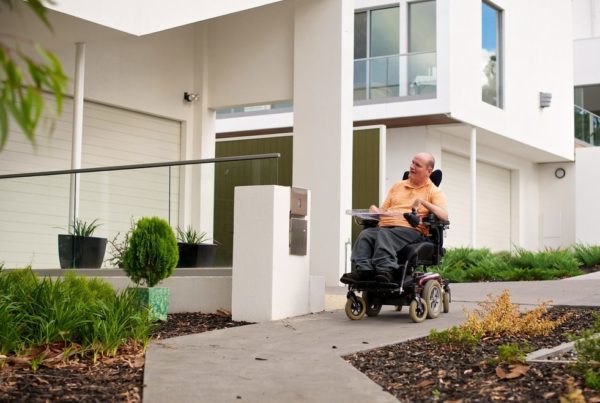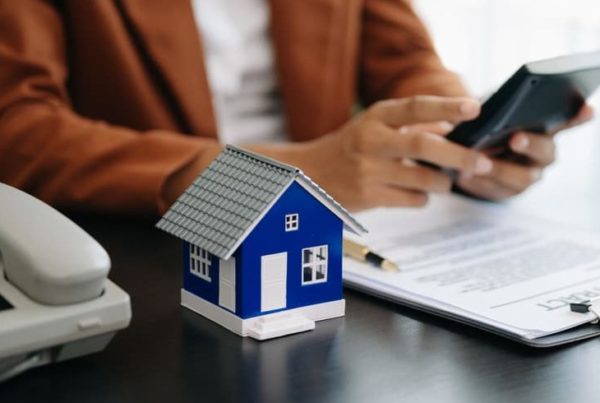The National Disability Insurance Scheme (NDIS) provides funding for eligible participants to access specially designed homes, apartments, or shared accommodation with specific disability support features. Despite the significant need for such accommodation there is material shortage available to NDIS participants.
To address this critical issue, the government is providing funding at levels that encourages the construction of and investment into new accommodation specifically designed for people with disability.
Specialist disability accommodation (SDA) is such a form of housing being funded via the NDIS and more is needed urgently throughout Australia.
The state and federal governments agree that these houses are needed NOW – and the levels of funding provided are set to encourage action.
So, how do you build SDA housing?
Here we go over how to choose your builder, SDA provider, your location, the SDA standards, considerations to maximise returns and the risks involved.
What is the NDIS?
The National Disability Insurance Scheme (NDIS), was established in 2013 to support people with disability and provides funding to eligible individuals (participants) so that they can purchase the disability related goods and services that they need, enabling participants to gain independence and achieve a greater quality of life. As at 31 March 2023 there were over 550,000 active participants with approved NDIS plans.

What is SDA (Specialist Disability Accommodation)?
SDA is a specific housing scheme funded under the NDIS to assist an expected 6% of all NDIS participants meet their home accessibility needs, live more independently and improve the delivery of their person-to-person care services. Dwellings must be independently certified, registered with the NDIS and enrolled for SDA use at a specific Design Category.
Picking Your NDIS Approved Builder
There are a number of considerations to be made when building an SDA property in Australia for both private investors and NDIS participants.
Building SDA housing can be a complicated process: it is important that you seek out a reputable, experienced builder that knows the ins and outs of the SDA design standards.
Specialist disability accommodation is often more costly to build than a standard residential property because the dwelling will have additional accessibility specifications to support tenants.
The dwelling will need an SDA approved design and once complete be assessed and enrolled as an SDA property. The assessor is independent from any party directly involved with the build of your NDIS home. A list of accredited assessors can be found here.
Choose a builder who can:
- Prepare a project plan and advise on construction issues at the assessment meeting
- Recommend multiple design options and work in collaboration with you, your architect and the SDA assessor
- Coordinate the build in conjunction with NCC (National Construction Code) standards
- Manage the build and all relevant contractors, ensuring compliance is met at every stage
- Be your point of contact through out the process
Every dwelling requires a registered SDA Provider to manage it and the funding via the NDIS flows through them. It is essential that you also engage a registered and reputable SDA Provider early in the design process.
You can use the NDIS provider finder searching the Registration Group ‘Specialist Disability Accommodation’ and your state for a listing of SDA Providers.
Choosing the Right Location for Your NDIS Investment Property
Over 30,000 NDIS participants are expected to be eligible for SDA funding and there is an annual budget of $700m of which only half is being spent. The majority of existing SDA is older stock and group homes which are not meeting the needs of eligible participants. Moreover, there are nearly 1,500 participants stuck in hospitals and more than 3,000 people under 65 living in residential aged care many of whom will meet the eligibility criteria for SDA funding.
The demand is there, now the question is, where to build it?
The critical consideration is where are the eligible NDIS participants, where do they want to live, who do they want to live with (if anyone) and what type of accommodation do they want or need to live in.
It’s important that your potential tenant needs to have access to family and friends, community and health support, public transport and potential employment. Some states outline recommendations for maximum distances SDA housing should be built from some of these points of consideration.
An SDA development often needs to be done on a flat block of land for the safety and wellbeing of the tenant(s) and to ensure the property has wheelchair access. Considerations should be given to the width of the property to allow for a driveway of 7800mm for mobility vehicle ramps [2].
Minimum SDA Standards for NDIS Housing
SDA dwellings come with a list of stringent requirements that must be met in order to receive certification, from tap ware to light switches. Materials used must be sought from approved providers in order to ensure the house is safe for people with disabilities.
The higher than market rental income from SDA dwellings and the social benefits derived presents an attractive incentive to investors to undertake the additional effort and costs to operate within a more regulated sector.
The Specialist Disability Accommodation (SDA) Design Standard outlines the minimum standards for newly built (pre-2016) SDA dwellings [2].
There are four categories of SDA housing:
- High Physical Support
- Fully Accessible
- Improved Liveability
- Robust (for people living with an intellectual disability)
To qualify for NDIS funding, SDA homes must have a design standard certification from an accredited third-party SDA assessor. This assessment commences at the design stage for new property development (provisional assessment), and cannot be performed by the architect, builder, surveyor or designer that is directly involved with the project, as this presents a conflict of interest. A final assessment is done once the build is completed.
Considerations for Investors to Maximise Returns
There is no shortage of participants needing housing yet, at current, there is a shortage of SDA homes.
These properties are generally in high demand and can present a high cash flow investment option. But there are a number of considerations for investors:
- Specialist disability accommodation must be compliant with the NDIS set standards.
- SDA can cost more to build than standard housing as it is specifically designed for people living with a disability: build with the residents in mind
- Existing property can be modified under the guidance of an approved SDA assessor, though this is not necessarily the cheaper option.
- Interest rates on NDIS property is typically 1% higher than other investment loans [3]
- The majority of NDIS participants are seeking robust or improved liveability categories of SDA property and the recent pricing changes reflect more investment is needed in these categories. Weigh up the benefits of spending more for a higher level category (FA or HPS) initially to maximise your return in the long run
Are There Any Risks With Investing in NDIS Properties?
Too good to be true?
Property investors: proceed with enthusiastic caution. Like investing into any property market, the NDIS market comes with some risks too.
The SDA Financial Benchmarking [4] conducted by the NDIS outlines why SDA property rental income is as high as it is, and why a need to incentivise investors into the SDA market exists.
Do your research:
Build the types of SDA properties with the lowest vacancy rate for your area.
The biggest risk in SDA property is an initial period of vacancy. It can take time to find and match tenants. An experienced SDA Provider is critical to ensuring approved SDA participants are found and arrangements are in place to have them move in.
The upside?
Once tenanted, the likelihood is for tenancy for the long term, secure returns and a NDIS participant in more appropriate housing.
Eventually, supply will catch up with demand, so investing in the property market at the right time is critical to maximise your returns.
Get in touch with your finance provider to understand the realistic property income that can be derived.

Get expert help from our
Loan Specialists
Remember, this is still a home
The purpose of specialist disability accommodation is to enable secure and independent living for approved NDIS participants – your tenants. If you are considering modifying an existing dwelling, consider if this is the right property to become an SDA house.
Don’t forget:
Your tenants ultimately get to choose where they live.
Build in a participant-centric manner, not solely for the investment. Consider participants’ responses in the NDIS survey to determine your ideal build location and what kind of living format you should create.
Summary
Specialist disability accommodation is in high demand. The funding provided offers an attractive incentive to investors due to higher than market rental yields and the likelihood of long term tenancies.
Building a property for people with disability requires much forethought and planning in accordance with SDA standards. Choose an experienced builder and SDA provider with strong expertise in the field, and who will guide you through the assessment process with an accredited SDA Assessor and find your tenants.
SDA funding has bipartisan support from both Federal and State governments and is expected to be here for the long haul. Grow your property portfolio with an SDA home, and invest with an NDIS loan to create better social outcomes and independent living for vulnerable Australians.
Disclaimer: This article is not intended as legal, financial or investment advice and should not be construed or relied on as such. Before making any commitment of a legal or financial nature you should seek advice from a qualified and registered Australian legal practitioner or financial or investment advisor.
References
[1] NDIS, 2023, Understanding the NDIS
[2] NDIS, 2019, Specialist Disability Accommodation Design Standard.
[3] Australian Government Department of Social Services, 2023, Specialist Disability Accommodation.
Let’s get to know each other!
Talk to us about your home loan needs and we will package up a home loan with the features you want and tailor the rate to your circumstance.






